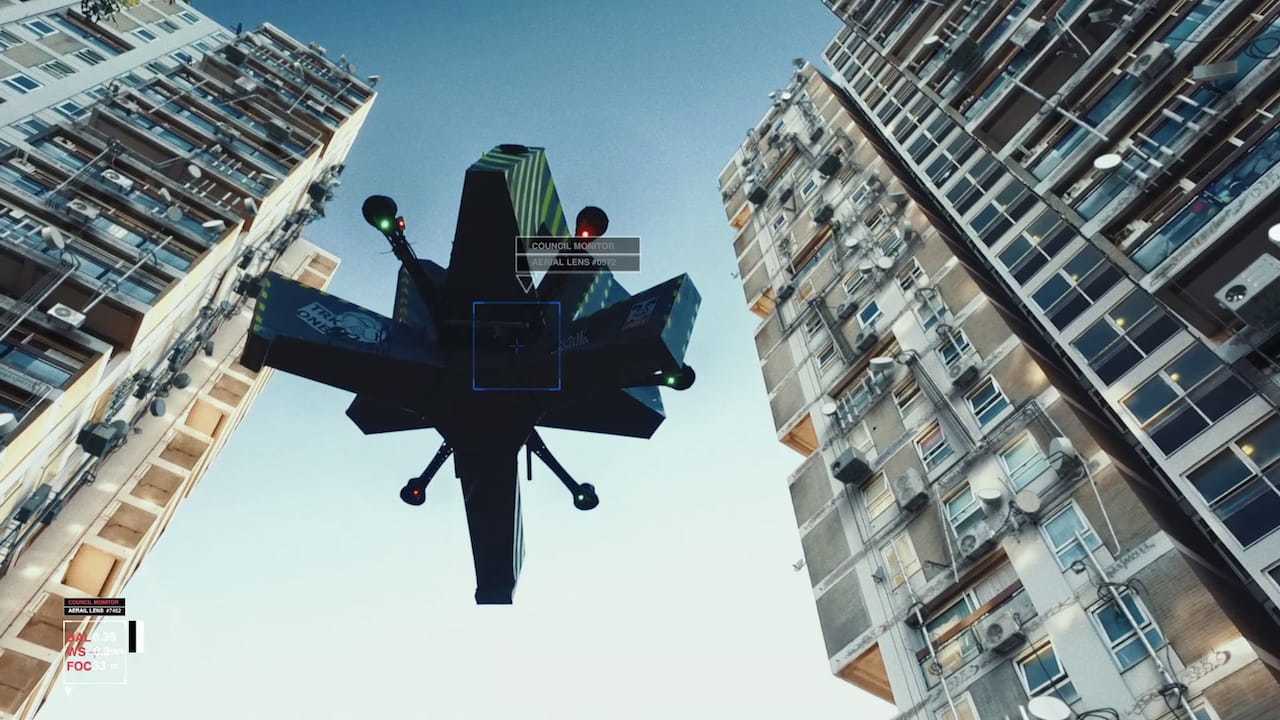Vast technological infrastructures increasingly dominate contemporary life, calling into question traditional assumptions about public space, citizenship, and identity as coherent organizing ideas for a redemptive humanism. As our built-up environment becomes increasingly mediated and controlled by algorithms and the world’s ecology is permanently marked by economic production, must ideas like citizenship, cities, and social responsibility be replaced by a posthuman logic, and what would its implications be for collective action and the shared spaces we inhabit? A panel introduced by SCI-Arc Director Hernan Diaz Alonso and featuring Laura Kurgan of Center for Spatial Research, Charles Renfro of Diller Scofido + Renfro, architectural historian Marrikka Trotter of SCI-Arc, and Liam Young of Tomorrow’s Thoughts Today discusses the ethical questions facing the future of architecture and urbanism, moderated by architecture critic and curator Stephen Zacks.
Robot Citizens is a partner program is organized by SCI-Arc.

Participants
Laura Kurgan is an associate professor of architecture at the Graduate School of Architecture Planning and Preservation at Columbia University, where she directs the Visual Studies curriculum, and the Center for Spatial Research. She is the author of Close Up at a Distance: Mapping, Technology, and Politics (Zone Books, 2013). Her work explores things ranging from digital mapping technologies to the ethics and politics of mapping, and the art, science and visualization of data. From 2004 to 2015, she founded and directed the Spatial Information Design Lab at GSAPP. Her work has appeared at the Cartier Foundation in Paris, the Venice Architecture Biennale, the Whitney Altria, MACBa Barcelona, the ZKM in Karlsruhe, and the Museum of Modern Art. She was the winner of the United States Artists Rockefeller Fellowship in 2009.
Charles Renfro joined Diller Scofidio + Renfro in 1997 and was named partner in 2004; he has practiced architecture for over 30 years. Renfro was named a National Academician in 2016 and received the 2015 Texas Medal of the Arts Award. In 2012, he was honored as a Rice University Distinguished Alumnus, among the youngest to receive the award. He is president of the board at Storefront for Art and Architecture in New York. Renfro frequently lectures at universities and conferences internationally. He has been published in journals and anthologies and is a contributing editor of Document Journal. Renfro has taught at Rice University, Parsons School of Design, and Columbia University. He is a visiting professor of curatorial studies at the School of Visual Arts in New York.
Marrikka Trotter is an architectural historian and theorist whose research examines the historical intersections between geology, architecture, agriculture, and landscape in the eighteenth and nineteenth centuries. She is co-editor of the contemporary architectural theory collections Architecture at the Edge of Everything Else (The MIT Press: 2010) and Architecture is All Over (Columbia Books on Architecture and the City: 2017), and her writing has appeared in publications such as Harvard Design Magazine, Log, and AA Files. She received her PhD from Harvard University in 2017, and her work has received funding from the Paul Mellon Centre, the Graham Foundation, the Canadian Centre for Architecture, and Sir John Soane’s Museum, among others. She is a full-time faculty member at SCI-Arc, where she coordinates the history and theory curriculum.
Liam Young is an Australian-born architect who operates in the spaces between design, fiction and futures. He is founder of the think tank Tomorrow’s Thoughts Today, a group whose work explores the possibilities of fantastic, speculative and imaginary urbanisms. Building his design fictions from the realities of present, Young also co-runs the Unknown Fields Division, a nomadic research studio that travels on location shoots and expeditions to the ends of the earth to document emerging trends and uncover the weak signals of possible futures. He has been acclaimed in both mainstream and architectural media, including the BBC, NBC, Wired, Guardian, Time Magazine, and Dazed and Confused and his work has been collected by institutions such as the Metropolitan Museum of Art and the Victoria and Albert Museum. He has taught internationally including the Architectural Association and Princeton University and now runs an M.A. in Fiction and Entertainment at SCI-Arc. Young manages his time between exploring distant landscapes and visualizing the fictional worlds he extrapolates from them.
Stephen Zacks is an architecture critic, urbanist, and curator based in New York City. Founder and creative director of Flint Public Art Project and president of the nonprofit Amplifier Inc., which develops art and design programs in underserved cities, he previously served as an editor at Metropolis and has published in the New York Times, Village Voice, Art in America, Hyperallergic, Abitare, Landscape Architecture Magazine, The Architect’s Newspaper, Architectural Record, Monocle, Blueprint, Mic, Curbed, and Print. His work has received awards from the Creative Capital | Warhol Foundation Arts Writers Grant, ArtPlace, National Endowment for the Arts, Graham Foundation, MacDowell Colony, New York State Council on the Arts, and the Newtown Creek Fund. He is currently writing a cultural history of New York City up to and after the mid-1970s fiscal crisis, I Won’t Go Back: Art, Architecture, and Capital Flows in the Ruins of New York, 1956-1989, tracking the influence of artist’s communities on neighborhood change in light of the wildly inflationary city that it turns out financial leaders planned to create all along.